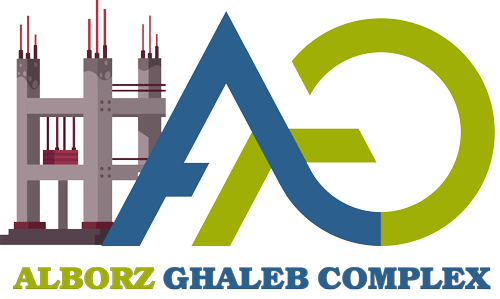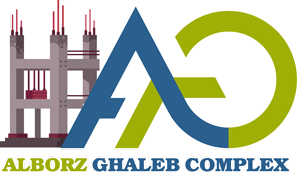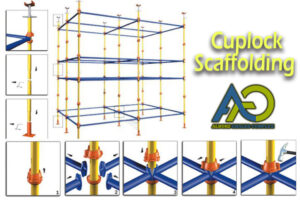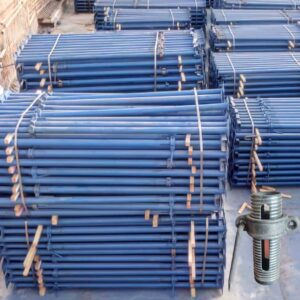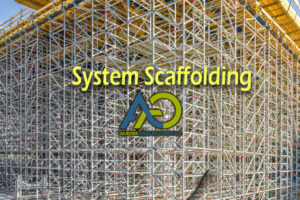Introduction: The Backbone of Modern Construction
Concrete is the cornerstone of modern construction, celebrated for its strength, versatility, and accessibility. This moldable material, formed by combining water, cement, and aggregates like sand and gravel, transforms into a rock-solid structure after curing. From towering skyscrapers to resilient bridges, dams, and earthquake-resistant buildings, concrete’s applications are vast and indispensable.
With advancements in technology, concrete has evolved beyond its traditional form, offering a range of specialized types tailored to specific needs. This comprehensive guide explores what concrete is, its various types, applications, curing processes, durability challenges, and sustainable practices. Additionally, we’ll highlight the critical role of construction tools, such as prop jacks for construction, in ensuring high-quality concrete structures.
What Is Concrete and How Is It Made?
The Core Components of Concrete
Concrete is a composite material made up of three primary ingredients:
- Portland Cement: Acts as the binding agent, reacting with water to form a paste that holds the mixture together.
- Aggregates: Comprising sand, gravel, or crushed stone, aggregates make up 60-75% of concrete’s volume, providing bulk and strength.
- Water: Triggers the chemical reaction (hydration) with cement, enabling the mixture to set and harden.
This mixture is poured into forms, where it cures and gains strength over time. High-quality formwork, supported by tools like prop jacks for construction, ensures precise shaping and structural integrity during this process.
The Hydration Process
Hydration is the chemical reaction between cement and water that causes concrete to harden. This process is influenced by factors such as temperature, humidity, and cement type. Proper curing is essential to prevent cracking and ensure optimal strength. Using prop jacks for construction to stabilize forms during hydration helps maintain the concrete’s shape and prevents deformities.
Role of Admixtures
Modern concrete often includes admixtures—chemical or mineral additives that enhance specific properties. For example, superplasticizers improve workability, while pozzolans increase durability. These advancements allow concrete to meet diverse construction demands.
Types of Concrete and Their Applications
Concrete comes in various forms, each designed for specific purposes. Below, we explore the main types and their uses:
1. Normal Strength Concrete
- Characteristics: Offers compressive strength of 10-40 MPa, with initial setting times of 30-90 minutes.
- Applications: Ideal for simple foundations, sidewalks, and low-load structures.
2. Plain Concrete
- Characteristics: Lacks reinforcement, with a density of 2200-2500 kg/m³.
- Applications: Non-load-bearing walls, decorative elements, and small-scale projects.
3. Reinforced Concrete
- Characteristics: Strengthened with steel rebar to enhance tensile strength.
- Applications: Columns, beams, and slabs in buildings and bridges. Prop jacks for construction are commonly used to support forms for reinforced concrete slabs.
4. Prestressed Concrete
- Characteristics: Incorporates pre-tensioned steel cables for superior load-bearing capacity.
- Applications: Large-span bridges, dams, and heavy industrial structures.
5. Precast Concrete
- Characteristics: Manufactured off-site and transported to the construction site.
- Applications: Wall panels, beams, and modular building components.
6. Lightweight Concrete
- Characteristics: Density below 1920 kg/m³, achieved using lightweight aggregates.
- Applications: High-rise buildings and earthquake-resistant structures to reduce dead loads.
7. Heavyweight Concrete
- Characteristics: Density of 3000-4000 kg/m³, using dense aggregates like barite.
- Applications: Nuclear power plants and radiation-shielding structures.
8. Air-Entrained Concrete
- Characteristics: Contains air-entraining agents for freeze-thaw resistance.
- Applications: Roads and structures in cold climates.
9. Polymer Concrete
- Characteristics: Uses polymer binders instead of cement for enhanced chemical resistance.
- Applications: Industrial flooring and decorative finishes.
10. Self-Consolidating Concrete (SCC)
- Characteristics: Highly flowable, eliminating the need for vibration.
- Applications: Complex structures with dense reinforcement.
11. Shotcrete (Sprayed Concrete)
- Characteristics: Applied via high-pressure spraying for rapid placement.
- Applications: Tunnels, retaining walls, and structural repairs.
12. Crumb Rubber Concrete
- Characteristics: Incorporates recycled rubber for lightweight and sound-insulating properties.
- Applications: Precast panels, roofing, and street curbs.
Each type of concrete requires precise formwork to achieve optimal results. Tools like prop jacks for construction play a vital role in stabilizing forms, especially for reinforced and precast concrete.
Concrete Curing: The Key to Strength
What Is Curing?
Curing is the process of maintaining adequate moisture and temperature in concrete during its early stages to ensure proper hydration. Effective curing enhances strength, reduces cracking, and improves long-term durability.
Why Is Curing Critical?
- Strength Development: Sufficient moisture allows cement to fully react, maximizing compressive strength.
- Crack Prevention: Proper curing minimizes shrinkage and thermal cracking.
- Durability: Well-cured concrete resists environmental stressors like freeze-thaw cycles and chemical attacks.
Curing Methods
- Water Curing: Spraying or ponding water to keep the surface moist.
- Wet Coverings: Using burlap or plastic sheets to retain moisture.
- Steam Curing: Applied in precast facilities to accelerate hardening.
- Chemical Curing Compounds: Sealants that prevent moisture loss.
Curing Duration
A minimum of 7 days is recommended for curing, though critical projects may require up to 14 days. During this period, prop jacks for construction ensure that forms remain stable, preserving the concrete’s integrity.
Applications of Concrete in Construction
Concrete’s versatility makes it indispensable across various construction sectors:
1. High-Rise Buildings
Reinforced and prestressed concrete are used for columns, slabs, and foundations in skyscrapers. Prop jacks for construction support slab forms, ensuring safety and precision during concrete placement.
2. Bridge Construction
Prestressed and precast concrete enable the construction of durable, long-span bridges capable of withstanding heavy loads.
3. Dams and Hydraulic Structures
Heavyweight and reinforced concrete resist water pressure and erosion in dams and reservoirs.
4. Tunnels and Underground Structures
Shotcrete is widely used for tunnel linings and metro stations due to its rapid application and strength.
5. Earthquake-Resistant Structures
In seismic zones, lightweight and reinforced concrete, designed per standards like Iran’s Code 2800, minimize damage. Prop jacks for construction enhance the safety of seismic-resistant slab construction.
Challenges to Concrete Durability
Factors Reducing Durability
Concrete durability can be compromised by several factors:
- Rebar Corrosion: Water and chloride penetration cause steel reinforcement to rust.
- Cracking: Shrinkage, thermal expansion, or improper curing lead to cracks.
- Sulfate Attack: Chemical reactions in aggressive soils degrade concrete.
- Freeze-Thaw Cycles: Repeated freezing and thawing cause surface spalling in cold climates.
Solutions to Enhance Durability
- Admixtures: Pozzolans and corrosion inhibitors reduce permeability.
- Quality Control: Precise formwork using prop jacks for construction ensures uniform concrete placement.
- Material Selection: Sulfate-resistant cements for harsh environments.
- Structural Design: Minimizing thermal and mechanical stresses through engineering.
Sustainability in Concrete Construction
Environmental Impact of Concrete
The concrete industry faces sustainability challenges due to:
- Resource Consumption: High demand for aggregates, water, and cement depletes natural resources.
- Carbon Emissions: Cement production contributes approximately 8% of global CO2 emissions.
- Waste Generation: Demolition waste burdens landfills.
Sustainable Practices
- Recycled Aggregates: Using crushed concrete from demolished structures reduces resource extraction.
- Green Cements: Geopolymers and magnesium phosphate cements offer lower carbon footprints.
- Crumb Rubber Concrete: Incorporates recycled tires, enhancing insulation and reducing waste.
- Water Recycling: Reusing washout water in batching plants conserves resources.
Concrete and Sustainability in Iran
Iran’s rapid urbanization underscores the need for sustainable concrete practices. Projects like the Jegiin Dam, which used pozzolanic cement, demonstrate successful eco-friendly approaches. By integrating tools like prop jacks for construction, projects can achieve both sustainability and structural excellence.
The Role of Formwork in Concrete Quality
Why Formwork Matters
Formwork shapes and supports concrete during curing, directly impacting its strength and appearance. Poor formwork can lead to defects, compromising safety and aesthetics.
Benefits of Prop Jacks
- Stability: Prop jacks for construction provide robust support for slab and beam forms, preventing collapses.
- Precision: Ensure accurate alignment for complex structures.
- Efficiency: Adjustable designs speed up formwork setup and removal.
How Formwork Improves Outcomes
- Surface Quality: Prevents irregularities and voids.
- Safety: Reduces risks during concrete pouring and curing.
- Cost Savings: Reusable prop jacks lower project expenses.
For high-quality formwork solutions, explore prop jacks for construction to elevate your projects.
Concrete and Seismic Resilience
Given Iran’s location in a seismic zone, earthquake-resistant concrete construction is critical. Lightweight and reinforced concrete, designed per Code 2800, minimizes structural failure during earthquakes. The Bam earthquake highlighted the effectiveness of compliant designs, with properly constructed buildings sustaining minimal damage. Using prop jacks for construction ensures stable formwork for seismic-resistant slabs and columns.
Conclusion
Concrete remains the bedrock of construction, offering unmatched strength and versatility. From normal strength concrete for simple projects to prestressed concrete for monumental structures, its applications are limitless. However, challenges like durability and environmental impact require innovative solutions, such as sustainable cements and recycled materials.
Tools like prop jacks for construction are essential for achieving high-quality results, ensuring precise formwork and safe execution. By embracing proper curing, quality control, and eco-friendly practices, the construction industry can harness concrete’s potential while minimizing its footprint. As we build the future, concrete—paired with advanced tools and sustainable strategies—will continue to shape resilient, enduring structures.
